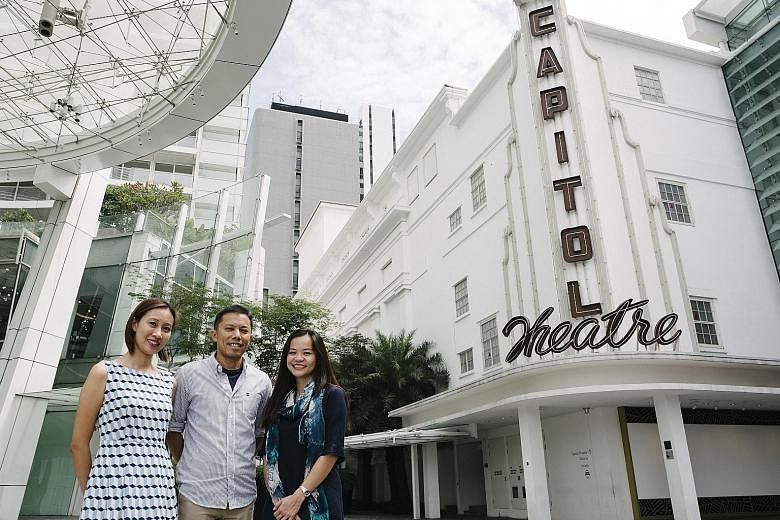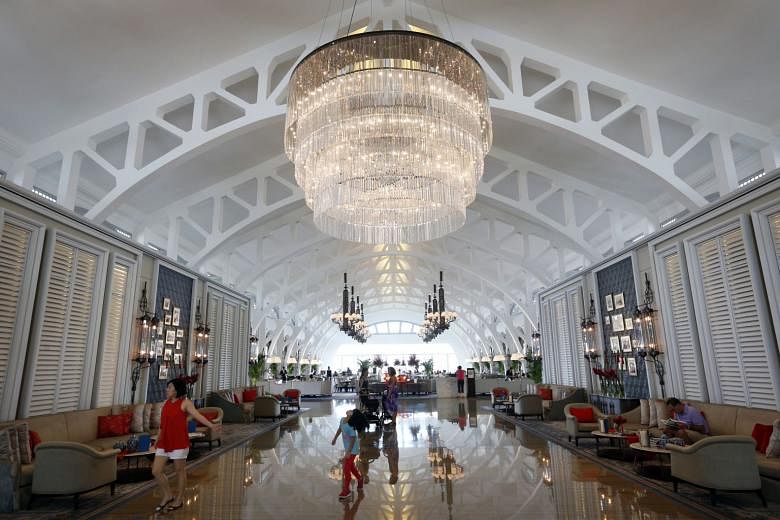Many in the architecture and heritage communities believe the horseshoe-shaped Pearl Bank Apartments in Outram - which is at risk of demolition - is a beacon of modern Singaporean architecture and should be retained.
But a new study indicates that members of the public do not share that sentiment.
The team from the Institute of Policy Studies' (IPS) Social Lab found that while many are aware of its existence (45 of 51 surveyed), only a fraction (10) believes the structure is important.
The team conducted preliminary focus group discussions with 51 Singaporeans aged 21 to 78 from September to October last year to understand the views of ordinary citizens towards Singapore's built heritage.
In the focus group sessions, participants were asked to evaluate 90 structures, including national monuments, conserved buildings and heritage sites that were the subject of headlines recently. The 1976 Pearl Bank Apartments was sold to developer CapitaLand in a collective sale in February this year.
Speaking to The Sunday Times, the study's lead researcher Paveena Seah, a senior research analyst at the IPS Social Lab, said some respondents evaluated the significance of some buildings lowly because they found them "ugly" or "rundown".
One respondent, for instance, described the Pearl Bank Apartments building as "a bit ugly", although another said its unique design "really shows the diversity of our urban landscape".

In other cases, they had simply never heard of, seen or visited the place. Ms Seah said: "Respondents did not find them important because they had little to no knowledge about them."
In a similar vein, perhaps hinting at a lack of awareness about the merits of post-independence "Singaporean" architecture, eight colonial-era buildings emerged as the respondents' top 10 most important buildings.
Only two post-independence buildings - the Changi Airport control tower and People's Park Complex - featured in their top 10.
The second phase of the IPS study, to take place later this year, will survey 1,500 Singaporeans for a nationally representative poll. This will help provide greater insight into the topic. The number of sites will be trimmed to about 50 in the new survey, and interviewers will be going door to door to conduct it.
Believed to be the first of its kind, the IPS Social Lab study also comes at a time when familiar landmarks such as Golden Mile Complex and People's Park Complex are at risk of going en bloc and disappearing from the island's skyline.
Other sites featured in the first phase of the study include the 1977 Rochor Centre, which will be demolished gradually from Tuesday in preparation for the Land Transport Authority's North-South Corridor.
The head of IPS Social Lab, Dr Leong Chan-Hoong, said the study on public opinion is important since laymen's views are usually heard only in a piecemeal fashion whenever such redevelopment news breaks.
The first phase of the study therefore helped the IPS researchers establish four criteria the public typically uses to appraise heritage sites.
They are: their personal knowledge of a building's historical and sociocultural significance; collective and personal memories of the place; a structure's aesthetic appeal and functional utility; and, if applicable, whether the sites have been repurposed appropriately.
Of the 90 buildings featured in the study, respondents were most familiar with landmarks in central Singapore. These included Raffles Hotel, St Andrew's Cathedral, Rochor Centre, Fullerton Hotel and Sri Mariamman Temple.
The survey results also revealed that many were unfamiliar with the Chesed-El Synagogue monument, the conserved Beaulieu House at Sembawang Park, and old buildings such as the 1950s Palmer House in Tanjong Pagar. Fewer than half of the respondents said they were aware of these places.
The team, which includes IPS Social Lab's senior research fellow Natalie Pang and research analyst Hou Minzheng, said the knowledge gap can be closed with more experiential learning activities such as more intensive heritage trails, increasing site accessibility and ramped-up programming at various venues by their respective managers and owners.
Chang Architects' principal architect Chang Yong Ter said such surveys are useful in understanding ground sentiment. He added, however, that "aesthetic values are subjective and personal" and that acquired taste comes with time.
"Discerning, expert eyes and professional bodies should make the final call on what should stay and what can go."
The IPS researchers said their hope is for the study - which was supported by a grant from the National Heritage Board - to better equip policymakers in their approach towards built heritage conservation, education and engagement.
Dr Pang said: "Given Singapore's need to balance between rapid urban renewal and heritage conservation, more needs to be done to study how the public assesses built heritage, what matters to which group of people, and why."
-
What respondents said
-
The 51 respondents in the focus groups ranked the following as their top five most important heritage places here:
1. Clifford Pier
2. Singapore Botanic Gardens
3. Changi Airport control tower
4. Fullerton Hotel
5. Raffles HotelThe respondents ranked the following heritage places as less important to them, with some describing them as "ugly" or "rundown".
1. Dakota Crescent dove playground
2. Ministry of National Development Complex
3. Former government housing in Haig Road
4. Triple One Somerset (previously the Singapore Power Building)
5. Jurong Town Hall (ranked 65th in terms of importance)SOURCE: IPS SOCIAL LAB'S STUDY ON THE PERCEPTIONS OF SINGAPORE'S BUILT HERITAGE AND LANDMARKS




